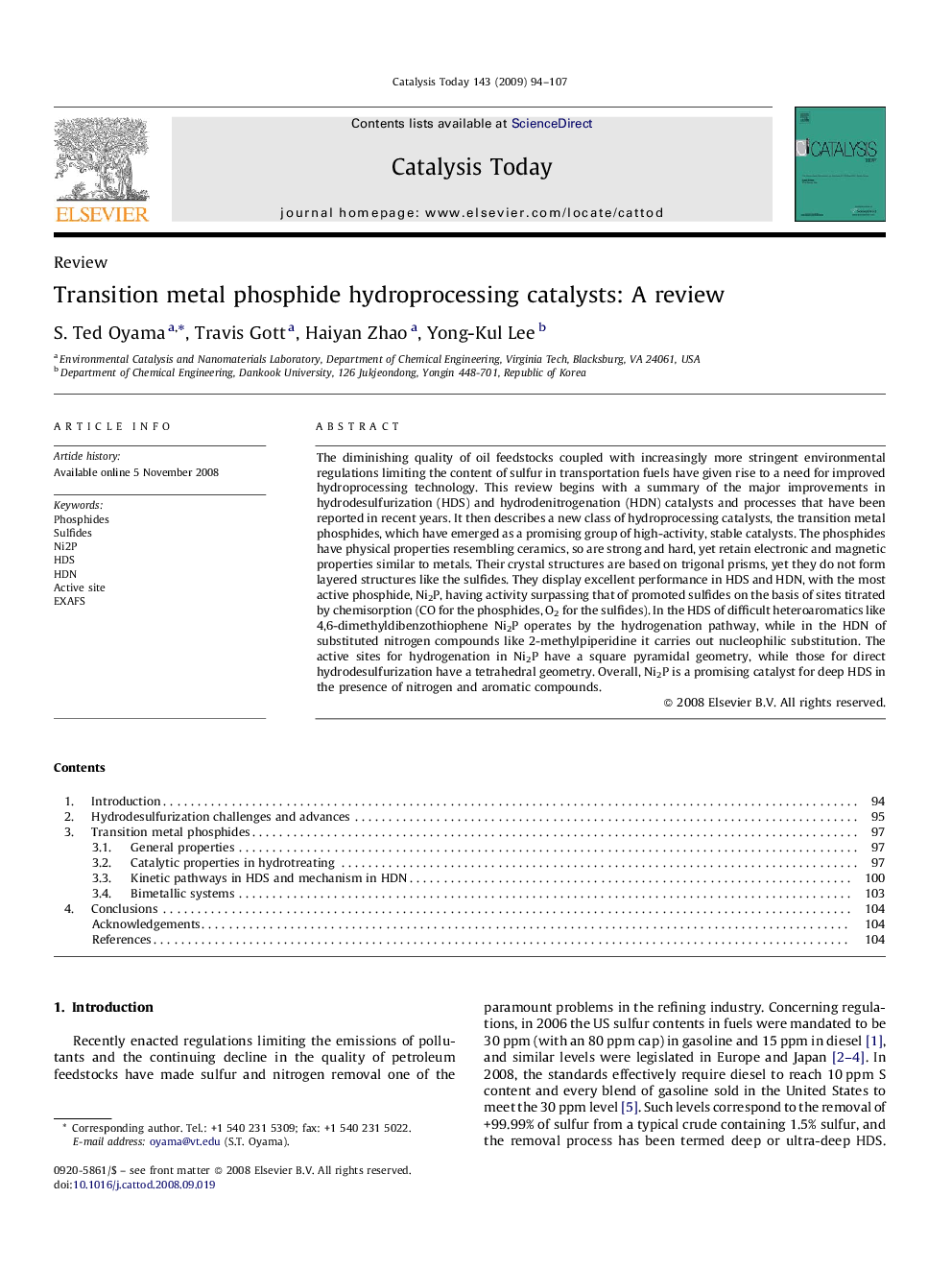| Article ID | Journal | Published Year | Pages | File Type |
|---|---|---|---|---|
| 57366 | Catalysis Today | 2009 | 14 Pages |
The diminishing quality of oil feedstocks coupled with increasingly more stringent environmental regulations limiting the content of sulfur in transportation fuels have given rise to a need for improved hydroprocessing technology. This review begins with a summary of the major improvements in hydrodesulfurization (HDS) and hydrodenitrogenation (HDN) catalysts and processes that have been reported in recent years. It then describes a new class of hydroprocessing catalysts, the transition metal phosphides, which have emerged as a promising group of high-activity, stable catalysts. The phosphides have physical properties resembling ceramics, so are strong and hard, yet retain electronic and magnetic properties similar to metals. Their crystal structures are based on trigonal prisms, yet they do not form layered structures like the sulfides. They display excellent performance in HDS and HDN, with the most active phosphide, Ni2P, having activity surpassing that of promoted sulfides on the basis of sites titrated by chemisorption (CO for the phosphides, O2 for the sulfides). In the HDS of difficult heteroaromatics like 4,6-dimethyldibenzothiophene Ni2P operates by the hydrogenation pathway, while in the HDN of substituted nitrogen compounds like 2-methylpiperidine it carries out nucleophilic substitution. The active sites for hydrogenation in Ni2P have a square pyramidal geometry, while those for direct hydrodesulfurization have a tetrahedral geometry. Overall, Ni2P is a promising catalyst for deep HDS in the presence of nitrogen and aromatic compounds.
